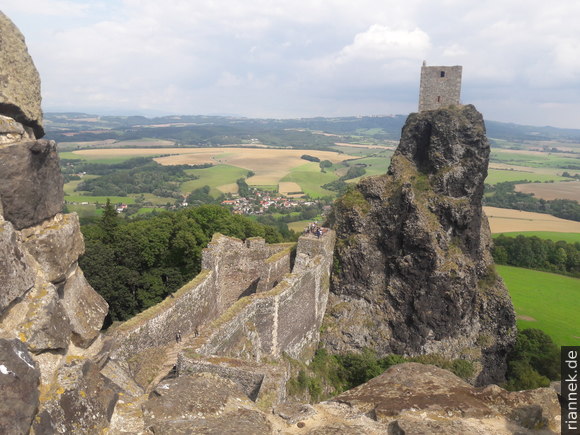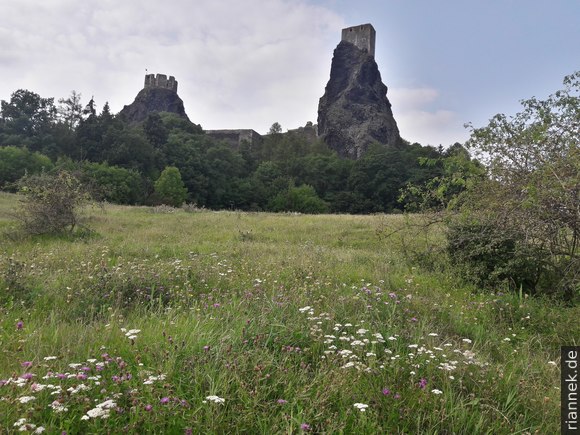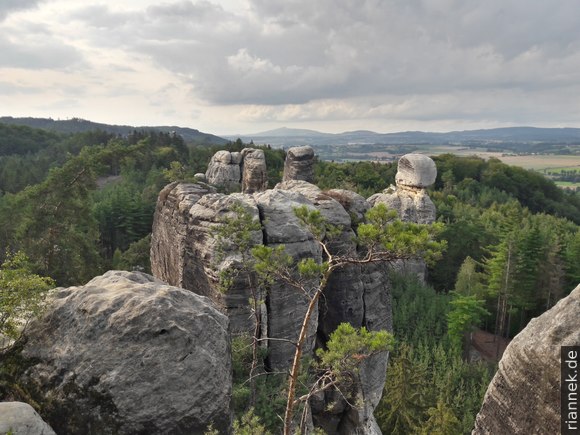
In the Tertiary period, many volcanoes were active throughout northern Czechia (and beyond), indirectly related to the mountain building of the Alps: Parts of Europe tried to avoid the thrust of the collision, which was accompanied by stretching roughly in an east-west direction. Throughout Central Europe, rift systems (including Rhone Graben, Upper Rhine Graben, and Eger Graben) and volcanoes were formed. In the Czech Republic, many of them are relatively inconspicuous, especially there are dome-shaped mountains. One particularly impressive volcano, however, is the rocks with the ruins of Trosky Castle, which is one of the best-known postcard motifs in the so-called Bohemian Paradise (Český ráj) in the north-east of the Czech Republic.

The two rocks called Baba (“old woman”, the smaller) and Panna (“virgin”, the larger) on which the towers stand are striking. But before these were formed, two quite normal cinder cones were formed in succession by strombolian eruptions, the eroded remains of which build up the hill below the rocks (the Panna cinder cone is a little younger and overlies the Baba cinder cone). However, magma was still present in magma chambers near the surface, which cooled and partially crystallised. As new magma entered the magma chamber, it forced the already highly viscous mass up through the vents of the cinder cones, severely deforming the cinder cones. The rocks are therefore lava domes. The rock is a basanite (a basalt-like alkaline rock) and thus typical of volcanism associated with rift systems.
Hrubá Skála, less than 3 km northwest of Trosky, is another well-known sight of the region: a Renaissance castle and a “rock city” of sandstone rocks. From the car park at the castle, a staircase leads down through a narrow gap into a veritable rock labyrinth. The fact that this is reminiscent of the Elbe Sandstone Mountains (Bohemian Switzerland and Saxon Switzerland) is no coincidence; both were deposited in the same sea basin.

Literature
Petronis et al. (2015). Emplacement history of the Trosky basanitic volcano (Czech Republic): paleomagnetic, rock magnetic, petrologic, and anisotropy of magnetic susceptibility evidence for lingering growth of a monogenetic volcano. Journal of Geosciences 60, 129–147.
Read on
Basalt columns at Panská skála
At the Prebisch Gate (Pravčická brána) in Bohemian Switzerland
The Formation of Mountains